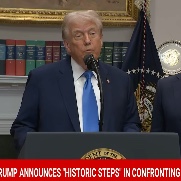White Women Keep Fucking Us Over
PoliticsOn Tuesday evening, 63 percent of white women voted for Roy Moore, a man accused of assaulting multiple teenage girls, and cruising for more—so aggressively that he was thought to have been banned from the Gadsen Mall. I’ll say it again: 63 percent of white women voted for the guy who was probably banned from a shopping mall for assaulting teenagers and for saying America was “great” during slavery. What world is this?
White women as a modern voting block have hindered progress in this country, once again proving that they that would rather back a many times-accused pedophile and bonafide racist over literally anyone else.
Apparently, an enduring one. White women’s allegiance to racist, sexist, or predatory candidates is a long-standing tradition in this country and can be traced all the way back to their central role upholding white supremacy in the US—stellar work they are still doing today. It was only last year that the majority of white people in this country proudly proclaimed, “The freedoms that we hold to be self-evident include a particularly skeezy kind of celebrity’s ability to touch my vagina when he likes.” In the 2016 election, as you’ll undoubtedly remember, 63 percent of white men voted for Donald Trump, another alleged sexual abuser, as did 53 percent of white women, while 93 percent of black women and 67 percent of Latinx women supported Clinton.
In every presidential election since 1996, this pronounced gender gap has existed—that is to say, most women voted for the Democratic candidate. But, in that time period, the majority of white women voters have essentially always picked the white Republican candidate—no matter his utter betrayal of women, people of color, and other marginalized groups.
The white supremacy is in the pudding: In 2012, 56 percent of white women voted for Republican Mitt Romney over President Barack Obama—a number that shoots to 61 percent when you count just women 45 and older, and all of whom were ostensibly won over—or at least not discouraged—by their candidate’s binders full of women. In 2008, 53 percent of white women voted for John McCain, a consistently anti-choice politician who once told a joke about a woman enjoying being raped by an ape—even though in both 2012 and 2008, Obama carried the female vote. In 2004, 55 percent of white women voted for the “stealth misogyny” of George W. Bush. In 2000, 90 percent of black voters voted for Al Gore, as did 63 percent of Latinx voters, according to Colorlines. Still, 49 percent of white women voted for George W. Bush, one point more than for Gore.
-

-

-

-

-

-

-

-

-

-

-

-

-

-

-

-

-

-

-

-

-

-

-

-

-

-

-

-

-

-

-

-

-

-

-

-

-

-

-

-








































